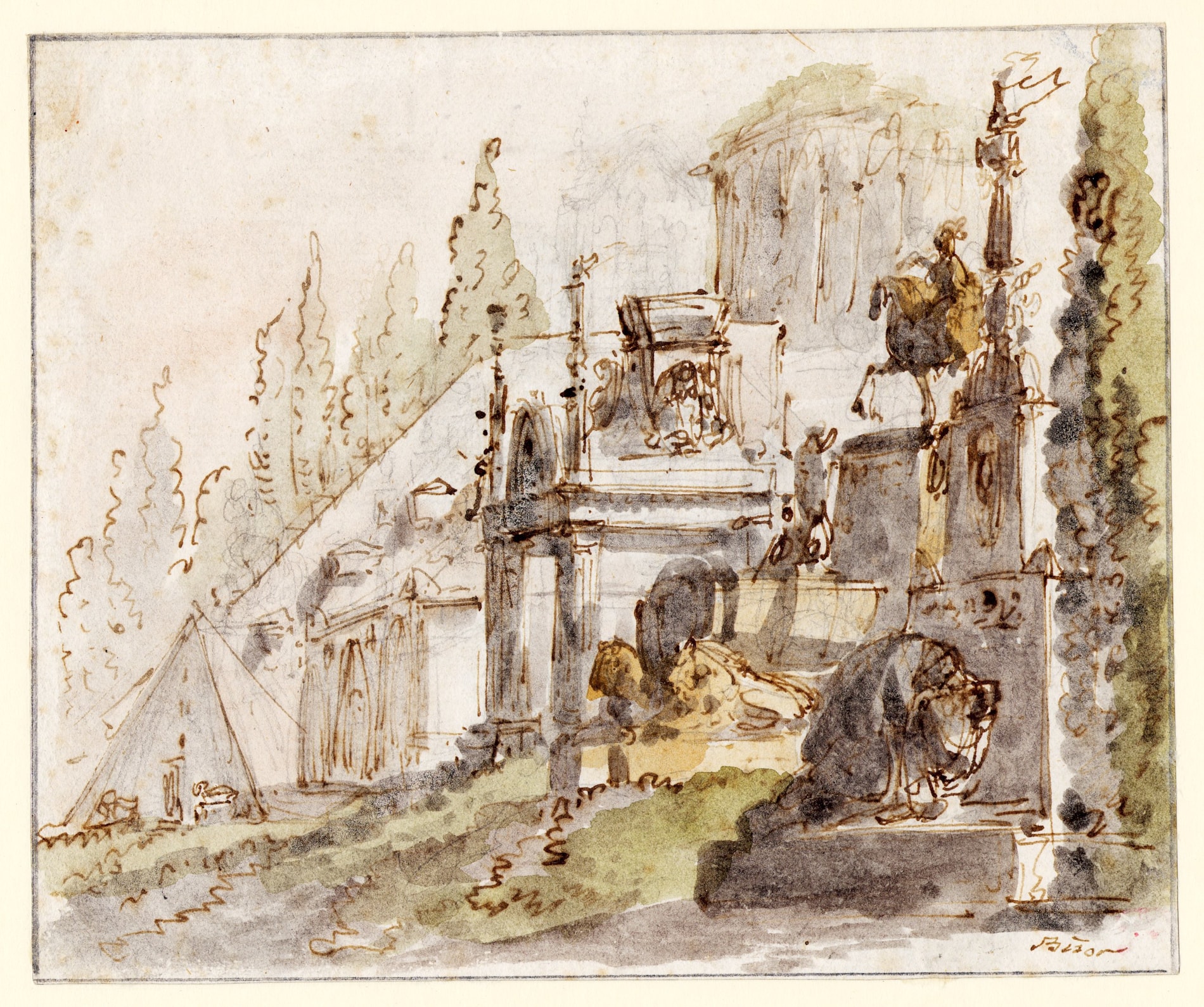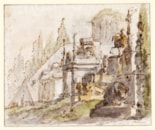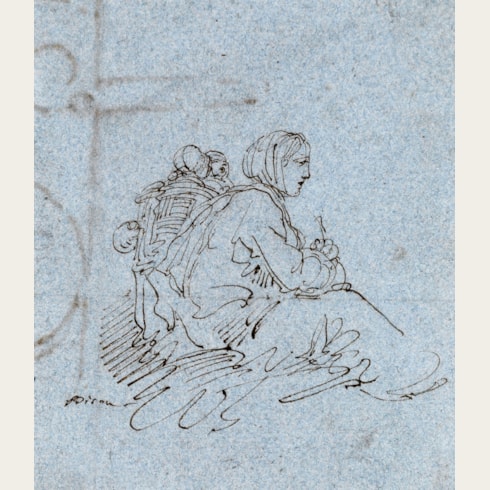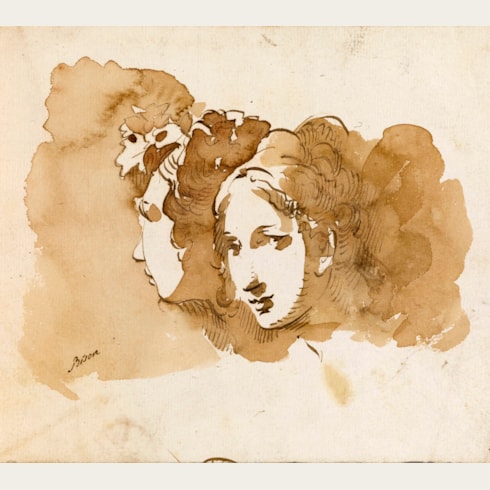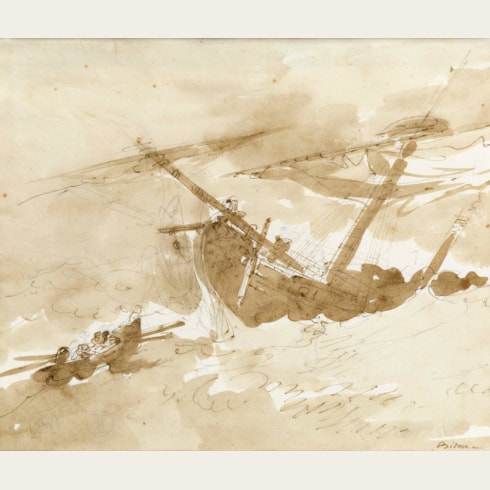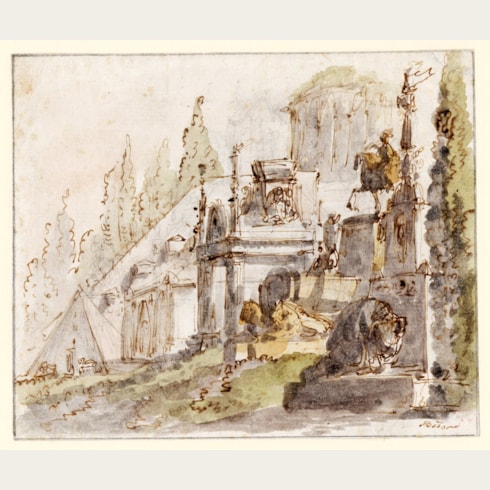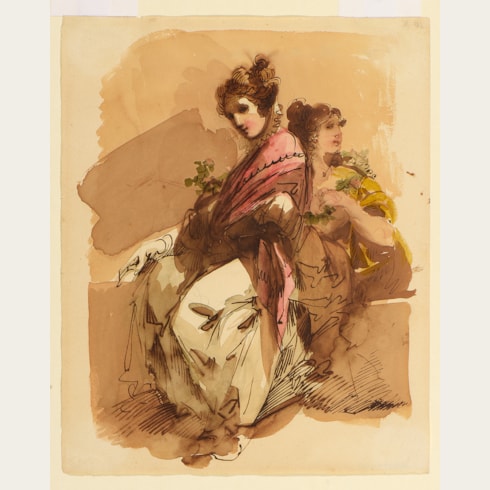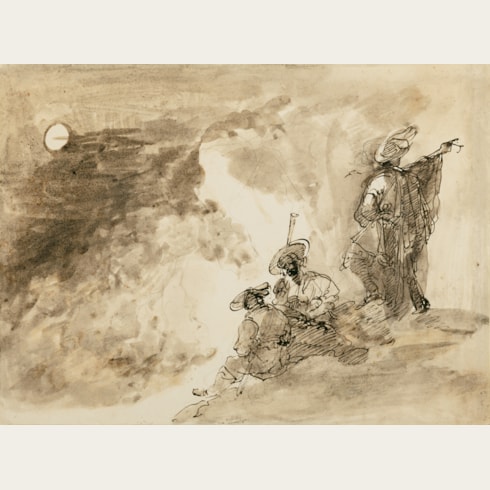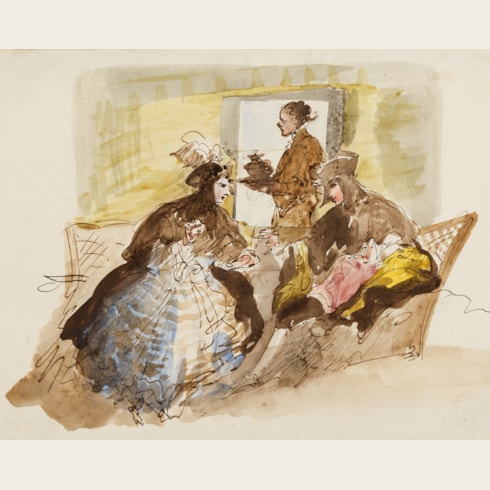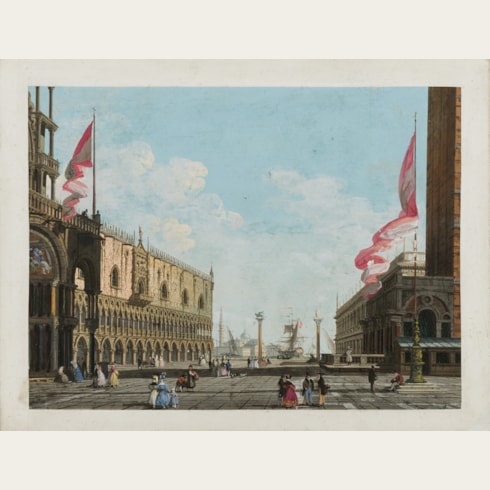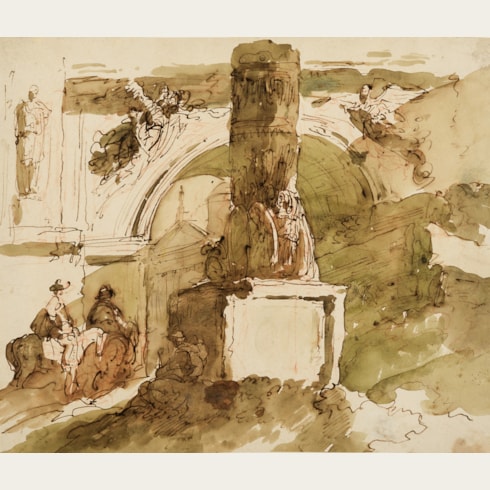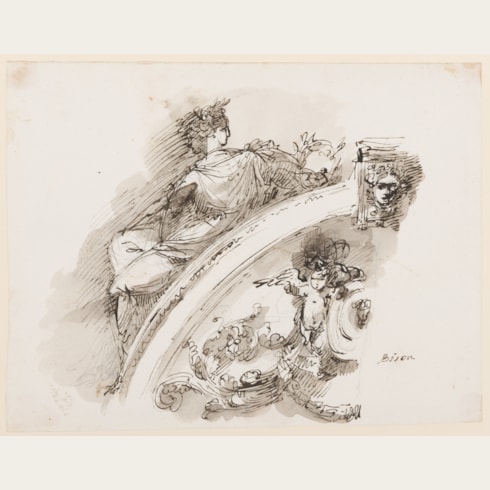Giuseppe Bernardino BISON
(Palmanova 1762 - Milan 1844)
A Capriccio Landscape with Classical Buildings
A sketch of a female (mythological?) figure in brown ink, over an underdrawing in black chalk, on the verso.
Signed Bison at the lower right.
127 x 154 mm. (5 x 6 in.)
ACQUIRED BY THE CROCKER ART MUSEUM, SACRAMENTO, CALIFORNIA.
Classical architecture, pyramids, monuments and equestrian statues appear frequently in Bison’s drawings. Similar motifs appear, for example, in a number of drawings in the collection of the Castello Sforzesco in Milan, part of a large group of studies by the artist in that collection. Also comparable to the present sheet is a drawing of an architectural capriccio in the Hermitage in Saint Petersburg, as well as another in an album of Bison drawings in the Fondazione Scaramangà di Altomonte in Trieste.
The spirited sketch of a woman on the verso of the present sheet is also typical of the artist’s drawn oeuvre, and may be compared with such drawings as another sheet in the Castello Sforzesco.
In the early 1800s Bison settled in Trieste, where among his most important works were the decoration of the Palazzo Carciotti with scenes from the Iliad, painted in monochromatic tempera between 1803 and 1804, and the ceiling of the Palazzo della Borsa Vecchia, completed in 1805. He also produced set designs and decorations, now lost, for theatres at Vipacco and Gorizia. In 1831, at the age of sixty-nine, Bison moved to Milan, where he was active for the remainder of his career. There he was particularly active as a scenographer, painting stage designs for the Teatro alla Scala and other theatres. Although his career lasted well into the 19th century, his style continued to retain something of the flavour of the Settecento. In 1842 an exhibition of around a hundred of Bison’s works was held in Rome. The artist died two years later, in relative penury despite his earlier successes.
Bison was an accomplished and prolific draughtsman, with an oeuvre of charming genre studies and landscapes in pen and ink wash or gouache. His earliest works show the influence of Giambattista Tiepolo and Francesco Guardi, while his later drawings tend towards Neoclassicism. His drawings encompass a wide and varied range of subjects, from religious narratives to genre scenes, capricci, and stage and ornament designs. Few of Bison’s many drawings, however, were done as preparatory studies for paintings, and he seems to have produced a large number of his drawings as independent works of art for sale; this is certainly true of his pastoral landscapes in gouache. Significant groups of drawings by Bison are today in the collections of the Castello Sforzesco in Milan, the Musei Civici in Trieste and the Cooper-Hewitt Museum in New York.
Provenance
Anonymous sale, New York, Sotheby’s, 14 January 1989, lot 346
P. & D. Colnaghi, London, in 1989.
Literature

